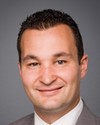The band council and the school administrating body, but these communities and these smallish schools face very considerable challenges because there is the factor of isolation. There is little, if any, secondary school system support. There are some tribal council or other services that provide some support but very rare instances of anything that would approximate what we know as the full school board type of system.
On your question about where it works, the best example we have is what we call the MK--Mi'kmaw Kina'masutithe--the Mi'kmaq Nova Scotia school board arrangement, where you have a transfer of jurisdiction to about 11 first nations. The feds passed a law that allows the first nation to opt in. They pass band council resolutions taking on the jurisdiction for education. They, in turn, all 11 of them, delegate certain things: teachers' certification, curriculum standards, school accreditation, and so on, these things that are very central to a school board type of functioning body. They delegate them to this arm's-length body and two things happen. There is some distancing between the management of the school and the individual band political leadership. That is one factor. The other factor is that there's an aggregation, an economy of scale, that takes place that's really not possible in the individual first nation.
By all reckoning, it's working very well. There's a strong partnership among the first nations. There's a strong, functioning early development school board there, and also, very interestingly, there's a very strong partnership between that group of first nations, as expressed through their aggregate board, and the provincial system.
The provincial government has bought in. There's a strong transfer of knowledge. There's a strong mutual engagement and cooperation, something that's not easily measured in monetary value but is worth a great deal, obviously.





